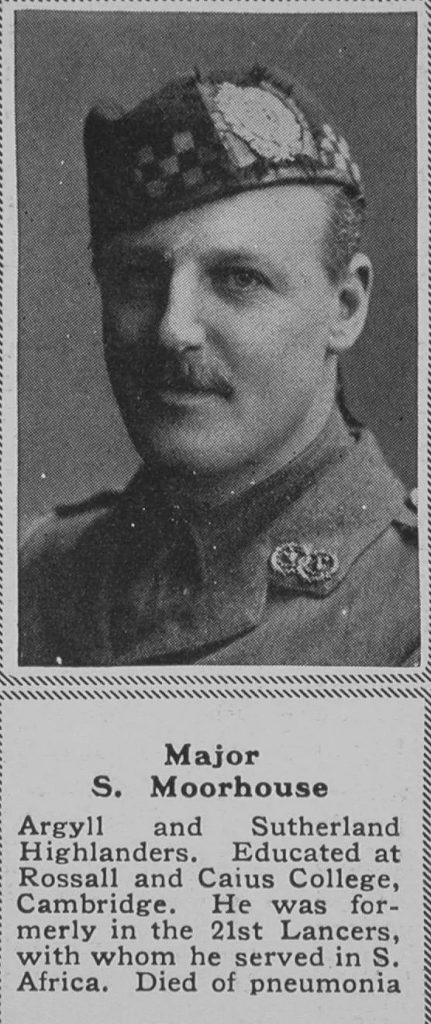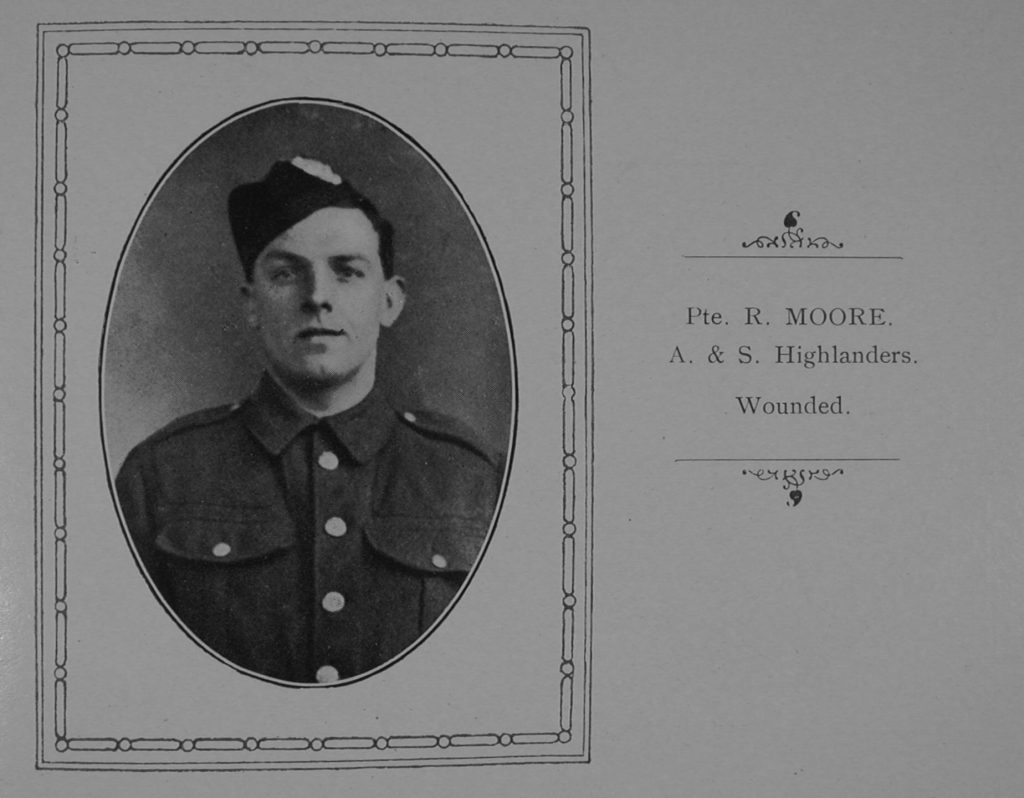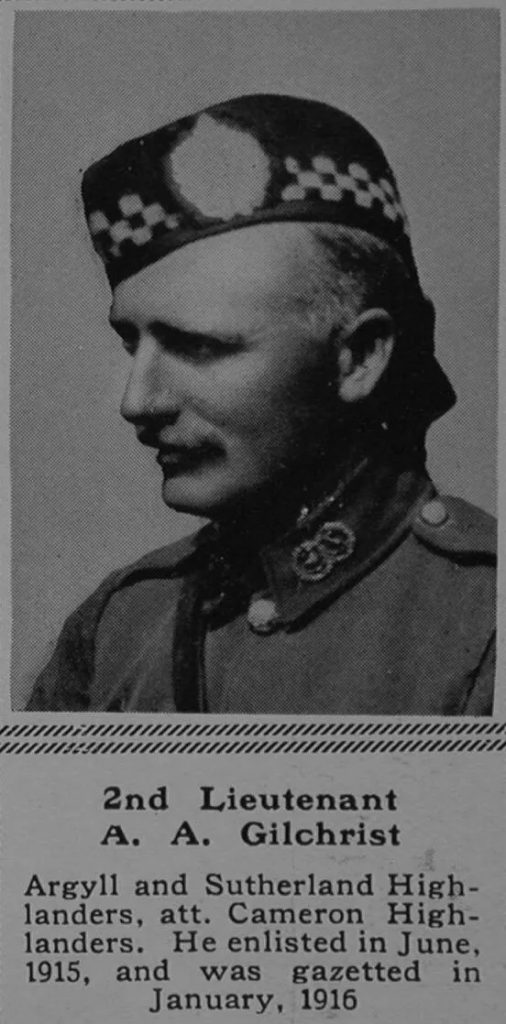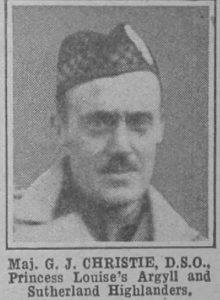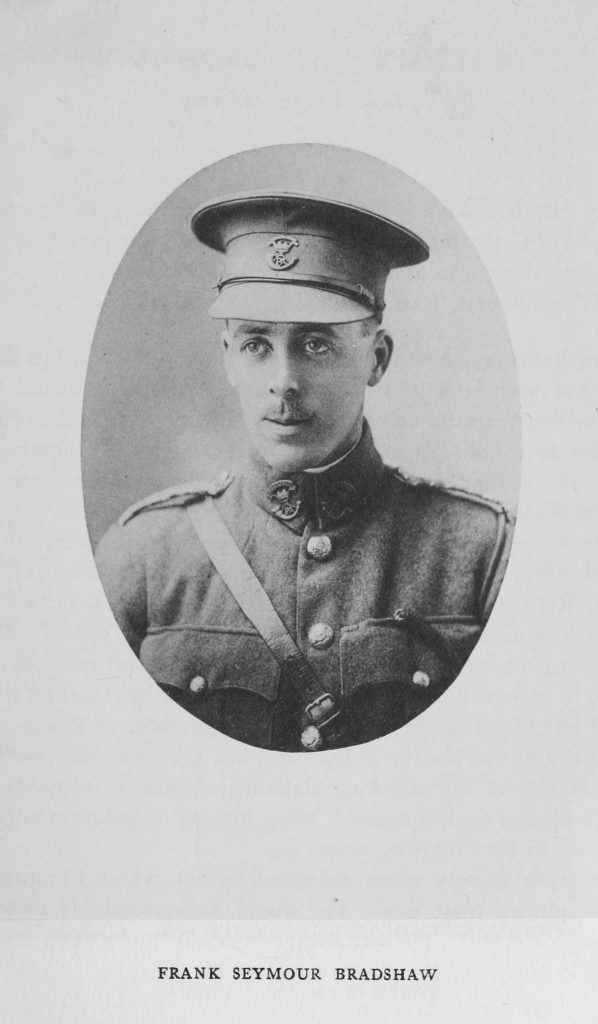Source : The Sphere 22nd Feb 1919
Author Archive: WW1 Photos
Brown W J Pte 20373 Argyll And Sutherland Highlanders
BROWN, WILLIAM JOHN, Private, No. 20373. Princess Louise’s (Argyil and Sutherland Highlanders), attd. 1/14th (Service) Battn. The Black Watch (Royal Highlanders); 3rd s. of Alexander Brown, of Annfield, Letham, co. Forfar, Farmer, by his wife, Elizabeth, dau. of James Saddler; b. Letham aforesaid, 7 April, 1889; educ. Craichie and Letham Public Schools; assisted his father in the work of his farm; enlisted 22 Dec. 1916: left England for Egypt 16 April, 1917, and was drowned 4 May following, on H.M.S. Transylvania, when that ship was torpedoed in the Mediterranean. Buried in Zinola Cemetery, Savona, North Italy; unm.
Source : De Ruvigny’s Roll Of Honour Vol 3
Daubeny C J O Captain 1st Somerset Light Infantry
CAPT. CHARLES JOHN ODINEL DAUBENY, 3RD BATTN. PRINCE ALBERT’S SOMERSET LIGHT INFANTRY (S.R.), ATTD. 1ST BATTN.
DIED JUNE 16TH, 1917, OF WOUNDS RECEIVED THE PREVIOUS DAY, AT MONCHY-LE-PREUX. AGED 21.
At the School 1909-14 (School House).
Capt. C. J. O. Daubeny was the only son of Captain Charles William and Mrs. Daubeny, of The Brow, Combe Down, Bath, who belong to an old and well-known Bath family. His father spent some years in the service of the late Rajah Brooke in Sarawak, and on leaving the Straits took a Commission in the Somerset Militia, and later transferred to the 3rd Somersets, the Special Reserve. He had retired in 1909, but volunteered for service on the outbreak of war and is now serving with a Training Reserve Battalion in the Midlands.
C. J. O. Daubeny was elected to a Foundation Scholarship from St. Christopher’s School, Bath, in June, 1909, and entering the School in the following September reached the Upper Sixth in September, 1912. He became a House Præpostor in May, 1913, and a School Præpostor in January, 1914. In the O.T.C. he attained his Corporal’s stripes in September, 1913, was promoted Sergeant in January and Colour-Sergeant in May, 1914, and had obtained Certificate A. He had gone over to the Army Class in January, 1914, and leaving in July, 1914, received a Commission in the Special Reserve of the Somerset Light Infantry, dated October 17th, 1914. Joining his Regiment in that month at Crown Hill, Plymouth, he went to the Front in May, 1915, attached to the 1st Battn., and saw a great deal of fighting, being promoted Temporary Lieutenant February 21st, 1916, and full Lieutenant on April 4th.
On the first day of the Battles of the Somme, July 1st, 1916, he was wounded in the thigh at Beaumont Hamel, and was for a time in hospital at Oxford.
After a period of light duty at Plymouth he returned to the Front in December, and was slightly wounded, again in the thigh, on April 12th, 1917, at “Hyderabad Redoubt,” Fampoux, in the Battles of Aarrs, which began on April 9th and lasted till May 4th, but he was back at duty in twelve days.
1915, ached to the 1st Battn., and saw a great deal of fighting, being pro-moted Temporary Lieutenant February 21st, 1916, and full Lieutenant on April 4th.
On the first day of the Battles of the Somme, July 1st, 1916, he was wounded in the thigh at Beaumont Hamel, and was for a time in hospital at Oxford.
After a period of light duty at Plymouth he returned to the Front in December, and was slightly wounded, again in the thigh, on April 12th, 1917, at “Hyderabad Redoubt,” “Fampoux, in the Battles of Aarrs, which began on April 9th and lasted till May 4th, but he was back at duty in twelve days.
He had been promoted to Acting Captaincy on June 7th, being in command of a Company. On June 15th, 1917, the Germans started sending over some small trench-mortar shells and one fell a short distance away in his trench. Captain Daubeny stood up to ascertain whether any of the men had been hit, and at that moment one dropped within five yards of him. He was wounded in the head by a splinter, which pierced his shrapnel helmet, and died next day without having recovered consciousness.
By a strange coincidence his death took place at a C.C.S. at Aubigny, in Normandy, from which place, originally D’Albini, the family took their name.
His former C.O. wrote expressing his sympathy in the loss of “a dear and gallant son,” and added: “He had done so well. He was a great favourite of mine, and I thought a great deal of him.”
The Officer in command of his Battalion at the time said :-
“He was such a good lad, always so cheery and full of the joy of life. He was a most thorough sportsman and a real good capable officer, always to be relied on to carry out his duty effectively. He never knew what fear meant. We have lost both a good friend and a good officer, loved by the officers and by the men of his Company.”
Source : Tonbridge School In The Great War 1914-11919
Bradshaw F S Captain Somerset Light Infantry
CAPTAIN F. S. BRADSHAW Somerset Light Infantry
Aged 31
Dec. 19th, 1914
Son of the late Major Frank Boyd Bradshaw, 13th Somerset Light Infantry, and of Catharine Douglas Bradshaw, and great-grandson of General Laurence Bradshaw, also of the Somerset Light Infantry.
R.M.C., Sandhurst, 1902. Captain Bradshaw joined the Somerset Light Infantry, the Regiment in which he had been born and bred, in 1904, and was promoted Captain in 1914. For five years he served with his Regiment in India, where he was well known as a Polo player, and did much big game shooting and pig-sticking. In 1911 he went to the Depot at Taunton for three years, and rejoined his Regiment at Colchester, in March, 1914.
He went to the Front with the 11th Infantry Brigade, 4th Division, which, before leaving, was quartered at Harrow, in August, 1914. He took part in the Retreat from Mons, and was present at the Battles of Le Cateau, the Marne, the Aisne, Le-Gheer and the 1st Battle of Ypres. On November 2nd, 1914, he was wounded in the right hand, but refused, contrary to all advice, to be sent home. On November 22nd he returned to his Regiment, and was killed in the attack of December 19th, at Ploegsteert Wood. His Company was in reserve at the time, but seeing a brother-officer fall at the head of one of the attacking platoons, without a moment’s hesitation he jumped up and took command, being himself killed soon after.
A private in his Company writes:-
“His death is very much regretted by the whole Company, because they could always trust him. He would never send his men where he would not go himself. He was an exceptionally brave man, and knew his work, and it would be very difficult to find his equal.”
Source : Harrow Memorials Of The Great War 1914-1918 Vol 1
BRADSHAW, FRANK SEYMOUR, Capt., 1st Battn. Prince Albert’s Somerset L.I. (the old 13th), only s. of the late Major Frank Boyd Bradshaw (12th Somerset L.I.), by his wife, Catherine Douglas, dau. of Capt. Loftus Nunn, late 99th Regt., and great-grandson of Gen. Lawrence Bradshaw, some time commanding 13th L.I.; b. Weston-super-Mare, co. Somerset, 4 Dec. 1883; educ. East Sheen, Harrow and Sandhurst; gazetted 2nd Lieut. 23 Jan. 1904, and promoted Lieut. 12 June, 1906, and Capt. Nov. 1914. He was killed in action at Ploegsteert Wood, 19 Dec. 1914, and was buried near Somerset House there; unm. One of Capt. Bradshaw’s men wrote: “His death is much regretted by the whole company, because they could always trust him. He would never send his men where he would not go himself. He was an exceptionally brave man, and knew his work, and it will be very difficult to find his equal.”
Source : De Ruvigny’s Roll Of Honour Vol 1
